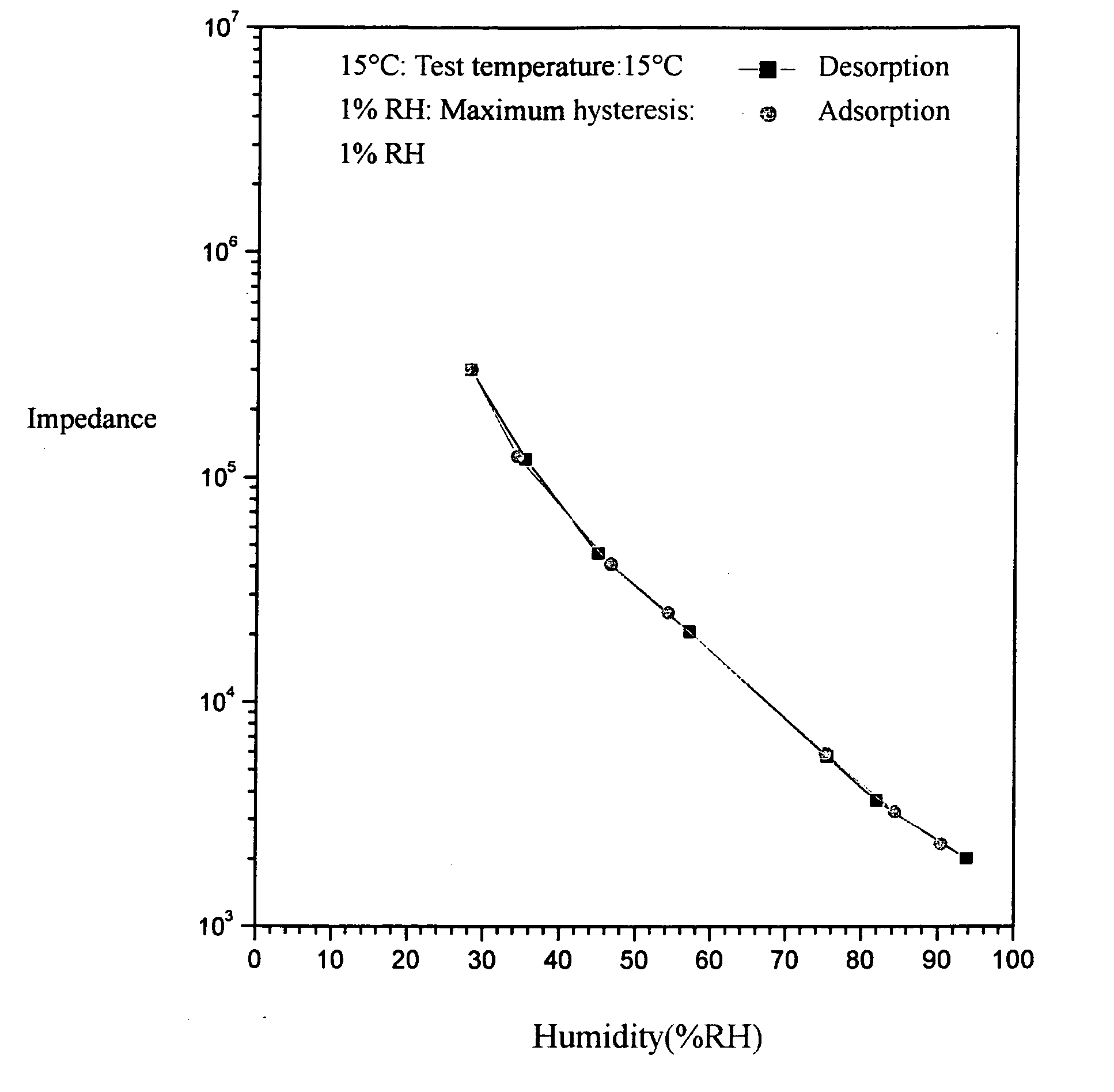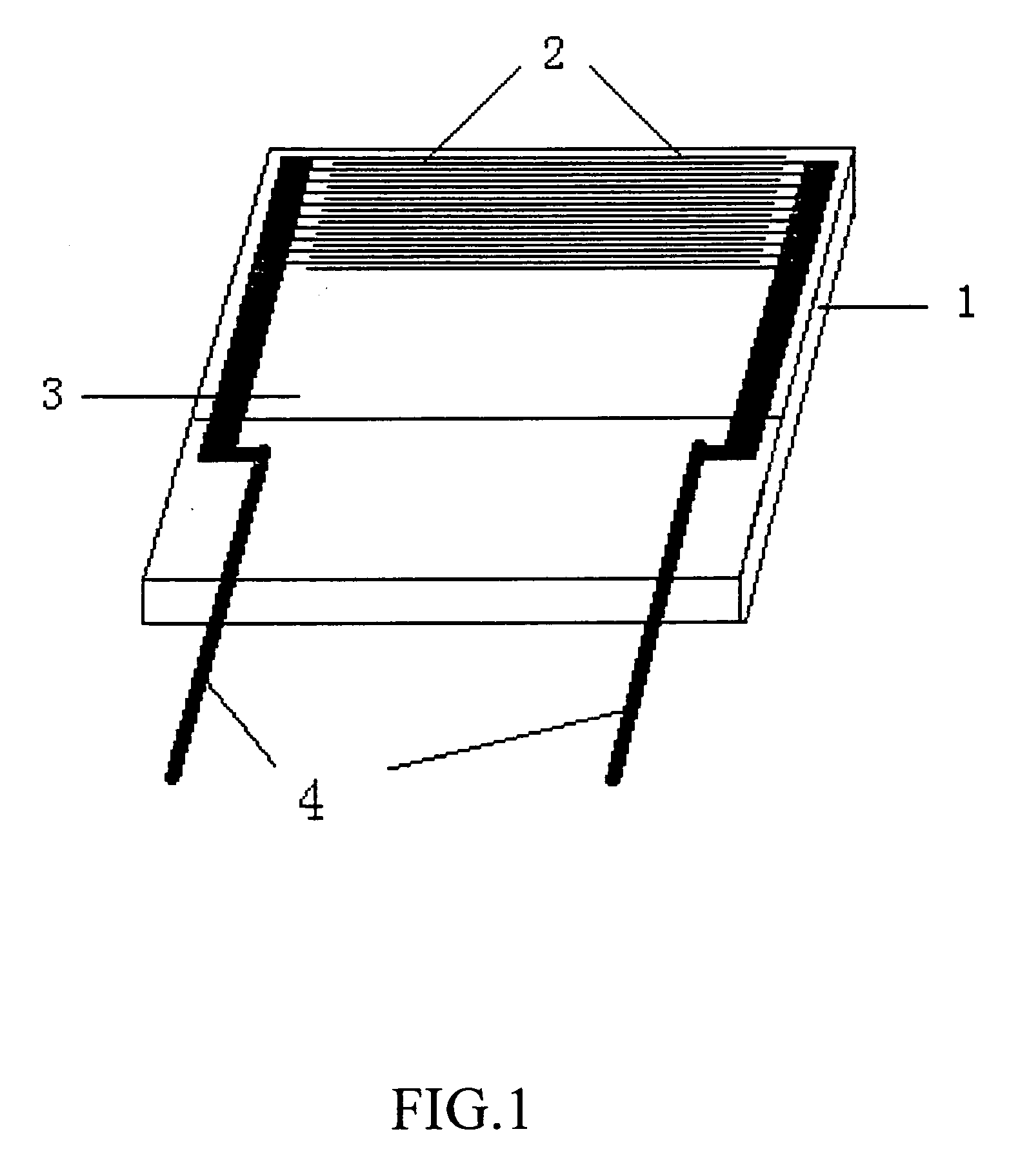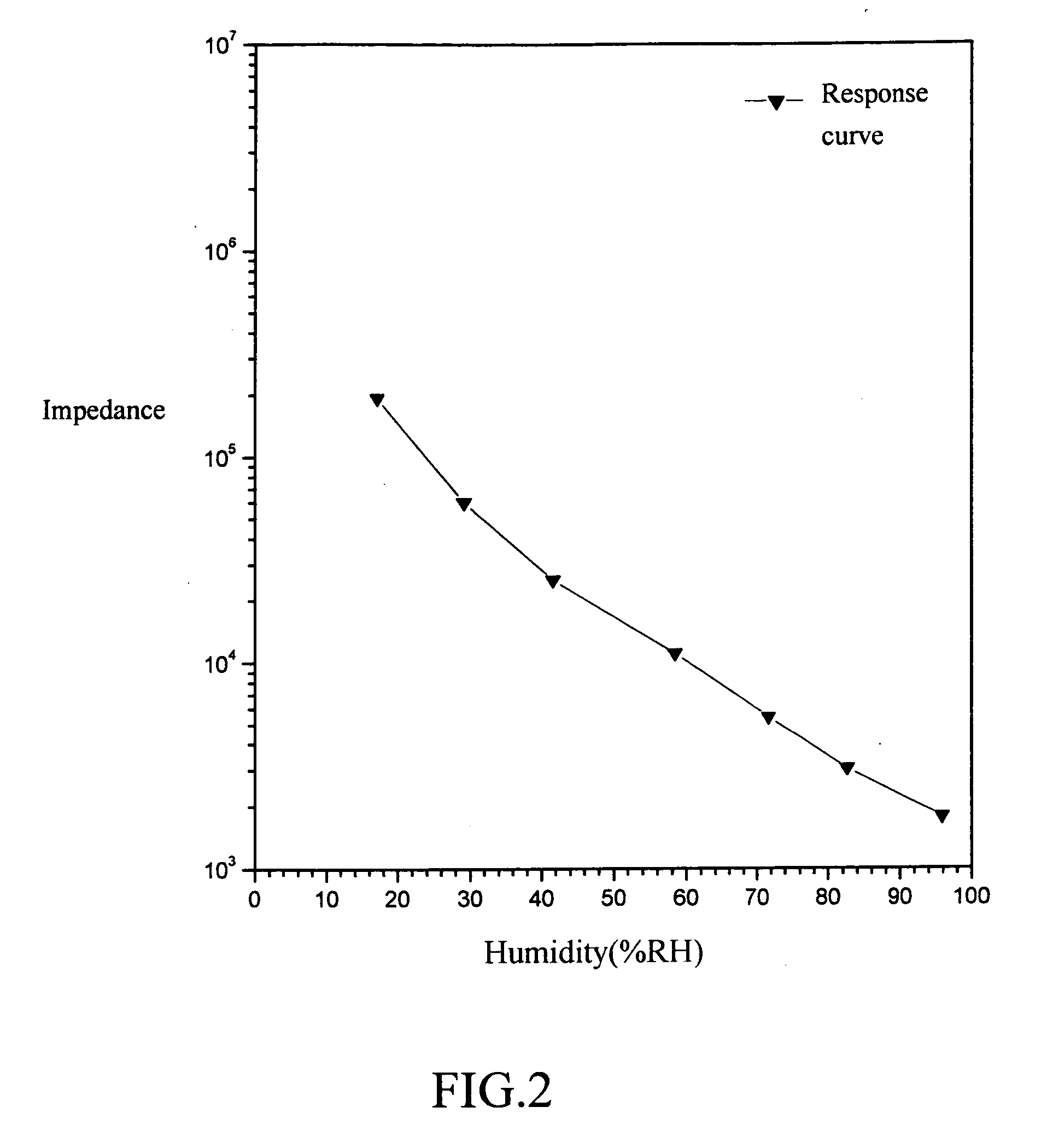Resistive thin film humidity sensitive device based on silicone-containing copolymer and its preparation method
a technology of humidity sensitive device and resistive thin film, which is applied in the direction of measurement device, scientific instruments, instruments, etc., can solve the problems of poor resistance at high humidity, difficulty in detection, and slow desorption response, and achieves low cost, convenient use, and small volume
- Summary
- Abstract
- Description
- Claims
- Application Information
AI Technical Summary
Benefits of technology
Problems solved by technology
Method used
Image
Examples
example 1
[0024] (1) Cleaning of electrode: The microlite glass substrate having interdigital gold electrodes is dipped in absolute alcohol and acetone for cleaning, respectively, and dried by heating to use for the next step.
[0025] (2) Deposition of humidity sensitive film by dip-coating and after treatment: The microlite glass substrate having interdigital gold electrodes is dipped in the solution containing humidity sensitive materials (the solution contains 20 parts by weight of silicone-containing copolymer and 100 parts by weight of deionized water, and the mol ratio of quaternary ammonium salt to siloxane in silicone-containing copolymer is 4:1) for 4 minutes, then lifted at a speed of 8 mm / sec. Finally, the treated microlite glass substrate is put into a constant temperature oven and heated at 80° C. for 15 hours to obtain the humidity sensitive thin film.
[0026] (3) Aging treatment: The humidity sensitive device with humidity sensitive film on the microlite glass substrate having in...
example 2
[0027] (1) Cleaning of electrode: The cleaning procedure is the same as Example 1.
[0028] (2) Deposition of humidity sensitive film by dip-coating and after treatment: The microlite glass substrate having interdigital gold electrodes is dipped in the solution containing humidity sensitive materials (the solution contains 40 parts by weight of silicone-containing copolymer and 100 parts by weight of deionized water, the mol ratio of quaternary ammonium salt to siloxane in silicone-containing copolymer is 2:1) for 2 minutes, then lifted at a speed of 6 mm / sec. Finally, the treated microlite glass substrate is put into a constant temperature oven and heated at 110° C. for 8 hours to obtain the humidity sensitive thin film.
[0029] (3) Aging treatment: The humidity sensitive device with humidity sensitive film on the microlite glass substrate having interdigital gold electrodes is put into a constant temperature and humidity chamber, and aged at a AC voltage of 300 mV, 1 kHz and 30° C. f...
example 3
[0031] (1) Cleaning of electrode: The cleaning procedure is the same as Example 1.
[0032] (2) Deposition of humidity sensitive film by dip-coating and after treatment: The microlite glass substrate having interdigital gold electrodes is dipped in the solution containing humidity sensitive materials (the solution contains 60 parts by weight of silicone-containing copolymer and 100 parts by weight of deionized water, the mol ratio of quaternary ammonium salt to siloxane in silicone-containing copolymer is 6:1) for 1 minutes, then lifted at a speed of 2 mm / sec. Finally, the treated microlite glass substrate is put into a constant temperature oven and heated at 120° C. for 5 hours to obtain the humidity sensitive thin film.
[0033] (3) Aging treatment: The humidity sensitive device with humidity sensitive film on the microlite glass substrate having interdigital gold electrodes is put into a constant temperature and humidity chamber, and aged at a AC voltage of 100 mV, 1 kHz and 30° C. f...
PUM
| Property | Measurement | Unit |
|---|---|---|
| size | aaaaa | aaaaa |
| size | aaaaa | aaaaa |
| size | aaaaa | aaaaa |
Abstract
Description
Claims
Application Information
 Login to View More
Login to View More - R&D
- Intellectual Property
- Life Sciences
- Materials
- Tech Scout
- Unparalleled Data Quality
- Higher Quality Content
- 60% Fewer Hallucinations
Browse by: Latest US Patents, China's latest patents, Technical Efficacy Thesaurus, Application Domain, Technology Topic, Popular Technical Reports.
© 2025 PatSnap. All rights reserved.Legal|Privacy policy|Modern Slavery Act Transparency Statement|Sitemap|About US| Contact US: help@patsnap.com



